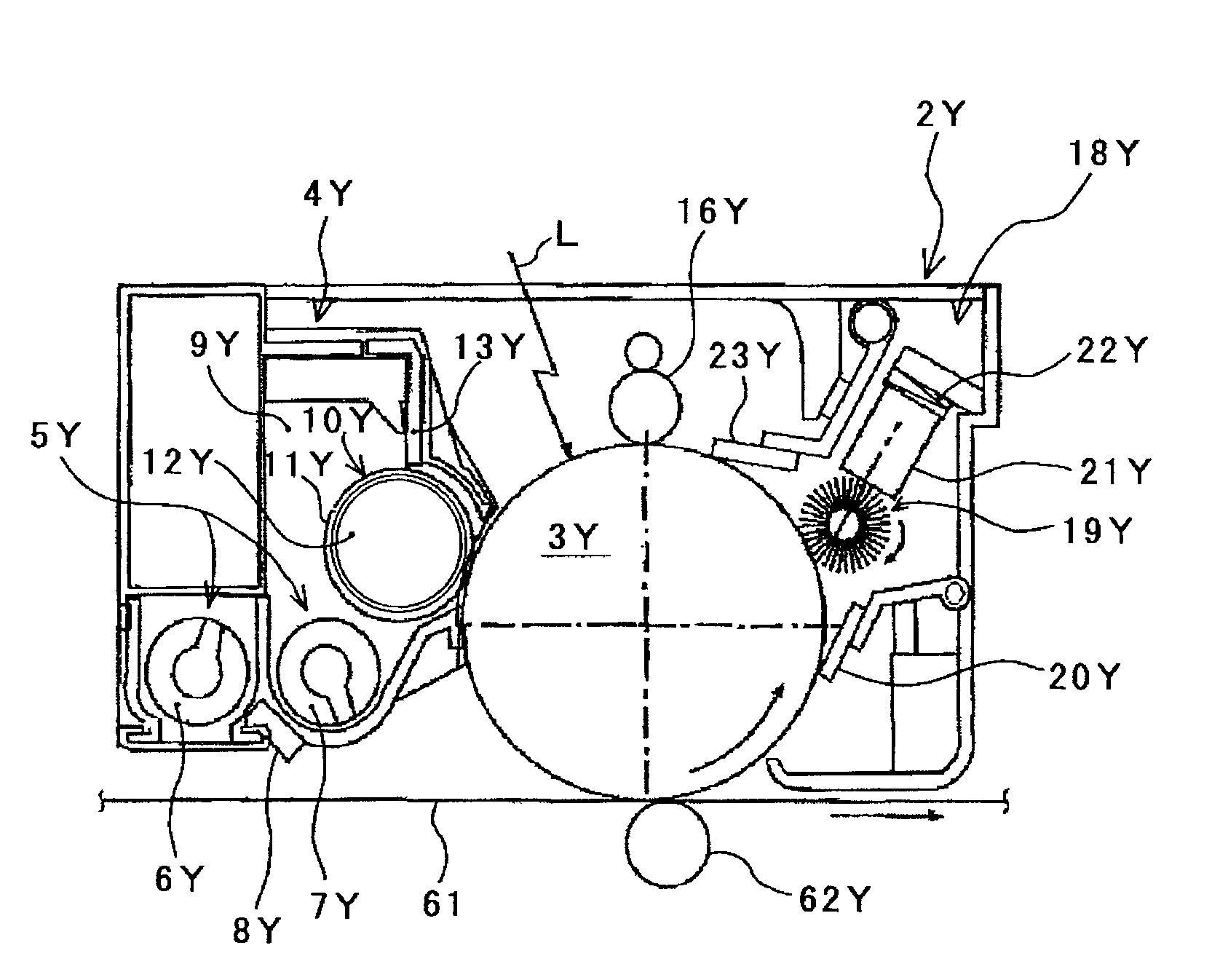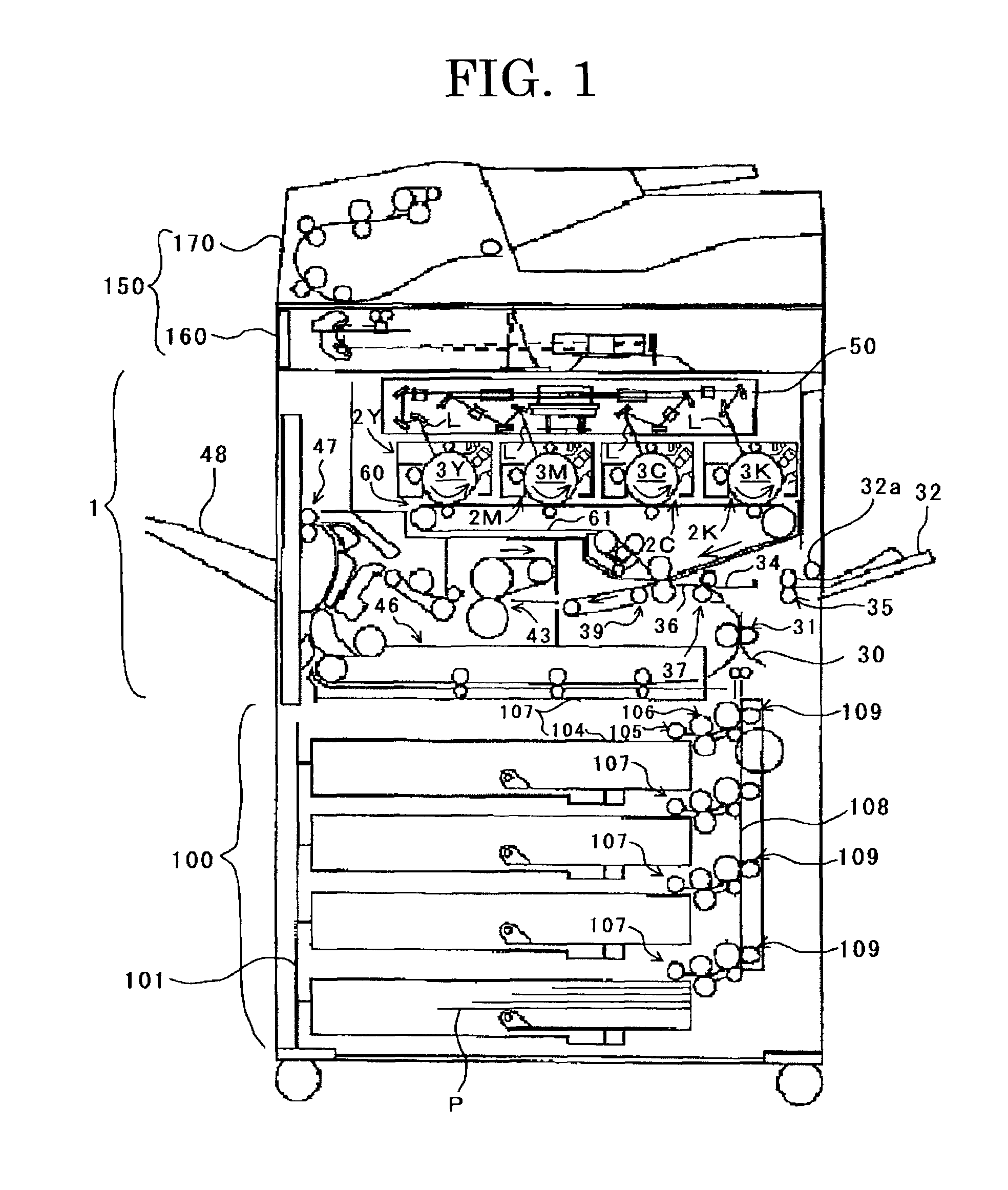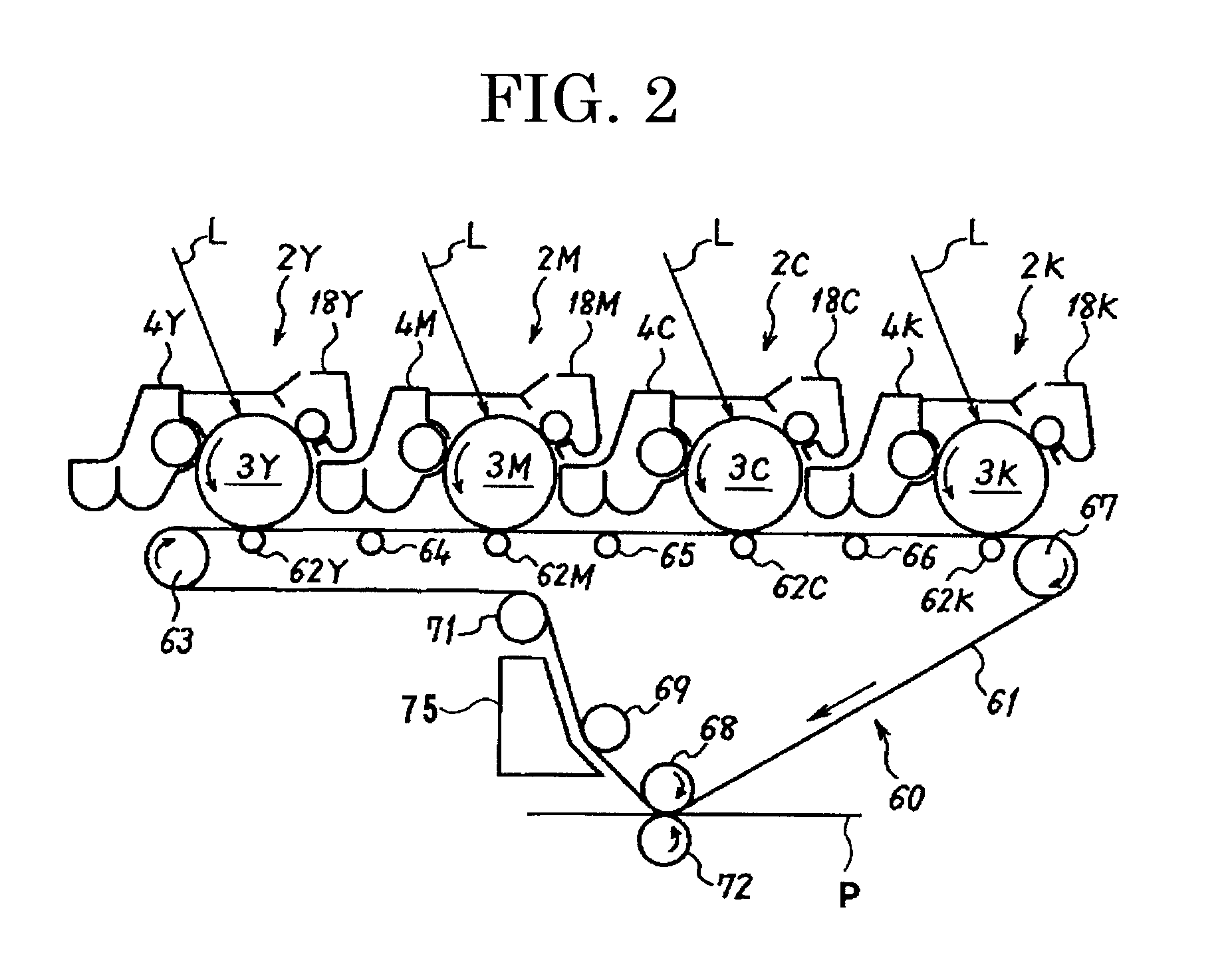Lubricant coater, image bearing unit, and image forming apparatus
a technology of image bearing and lubricant coater, which is applied in the direction of electrographic process apparatus, instruments, optics, etc., can solve the problem of fine streaks on images
- Summary
- Abstract
- Description
- Claims
- Application Information
AI Technical Summary
Benefits of technology
Problems solved by technology
Method used
Image
Examples
examples
[0211]Hereafter, the present invention will be further described in detail referring to specific Examples, however, the present invention is not limited to the disclosed Examples. On the contrary, the present invention is intended to cover various modifications and equivalent arrangements included within the spirit and scope of the appended claims.
experiment 1
[Experiment 1]
[0212]The inventors produced 21 samples of solid lubricants of Sample Nos. (1) to (21) as follows. Firstly, the components shown in Table 1 were put in a glass vessel with a lid. The components were agitated and melted with a hot stirrer under a predetermined temperature condition (the melting point shown in Table 2) to obtain a melt. Next, an aluminum die with an inside size of 12 mm×8 mm×350 mm was heated to the pre-heating temperature shown in Table 2. The melt was poured into the heated die and then naturally cooled down to a first cooling temperature (shown in Table 2). Next, the die was placed in a thermostatic bath, heated again to a reheating temperature (shown in Table 2), left intact under the temperature for a predetermined time (re-heating time shown in Table 2) and then naturally cooled down to the final cooling temperature shown in Table 2. A solid matter of lubricant obtained by the standing to cool was taken out from the die, and cut-formed in 7 mm×8 mm...
experiment 2
[Experiment 2]
[0222]Firstly, a solid lubricant was produced as follows. A normal paraffin having a melting point of 104° C. (79 parts by mass), a normal paraffin having a melting point of 112° C. (10 parts by mass) and 11 parts by mass of a cyclic polyolefin having a melting point of 60° C. (TOPAS-TM available from Ticona Co.) were put in a glass vessel with a lid. The components were agitated and melted with a hot stirrer at a temperature of 125° C. to obtain a melt. Next, an aluminum die with an inside size of 12 mm×8 mm×350 mm was heated to 88° C. The melt was poured into the heated die and then naturally cooled down to 50° C. Next, the die was placed in a thermostatic bath, heated again to 60° C., left intact under the temperature for 20 minutes and then naturally cooled down to the room temperature. A solid matter of lubricant obtained by the standing to cool was taken out from the die, and cut-formed in 7 mm×8 mm×310 mm, thereby obtaining a solid lubricant sample.
[0223]As a te...
PUM
 Login to View More
Login to View More Abstract
Description
Claims
Application Information
 Login to View More
Login to View More - R&D
- Intellectual Property
- Life Sciences
- Materials
- Tech Scout
- Unparalleled Data Quality
- Higher Quality Content
- 60% Fewer Hallucinations
Browse by: Latest US Patents, China's latest patents, Technical Efficacy Thesaurus, Application Domain, Technology Topic, Popular Technical Reports.
© 2025 PatSnap. All rights reserved.Legal|Privacy policy|Modern Slavery Act Transparency Statement|Sitemap|About US| Contact US: help@patsnap.com



